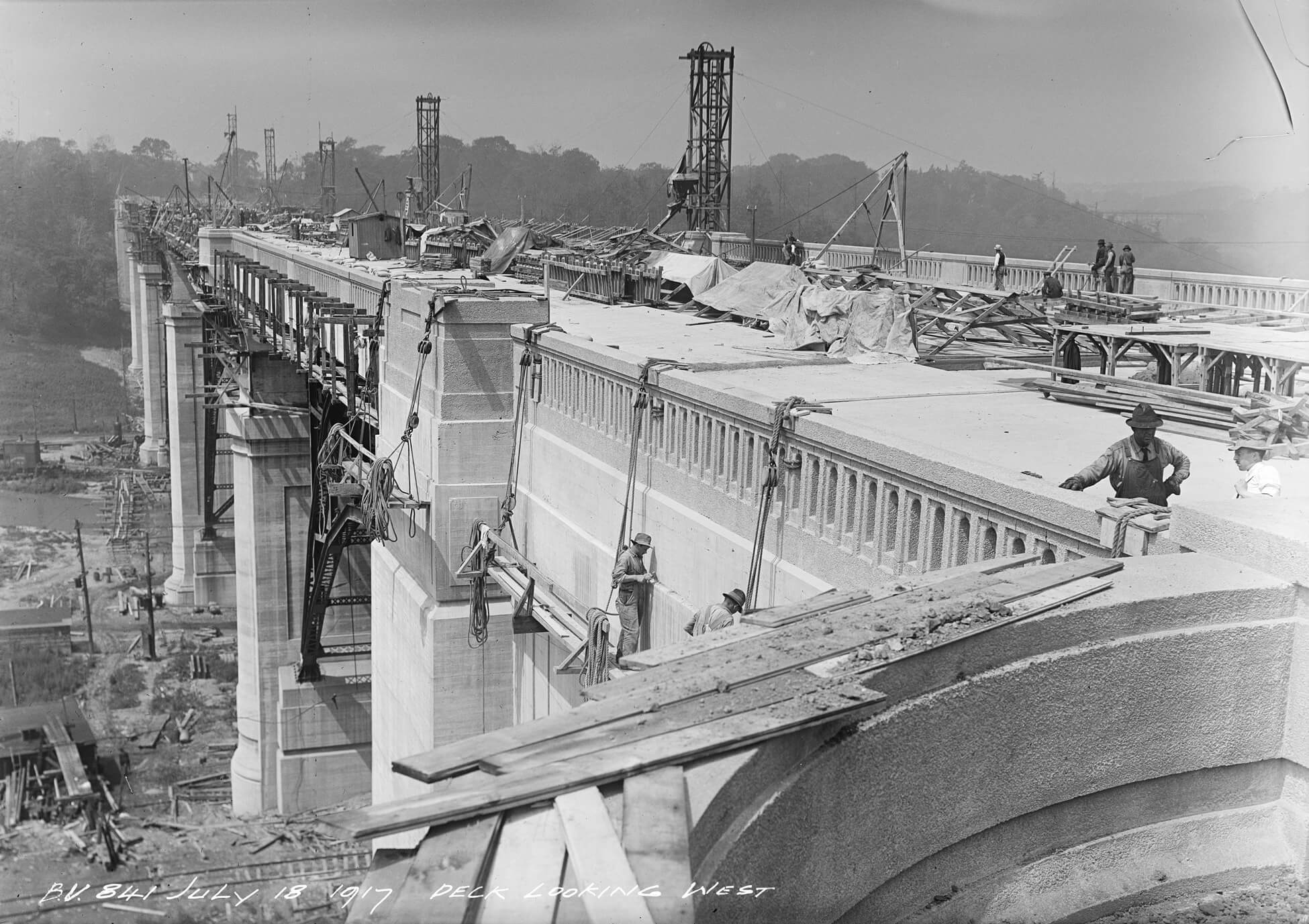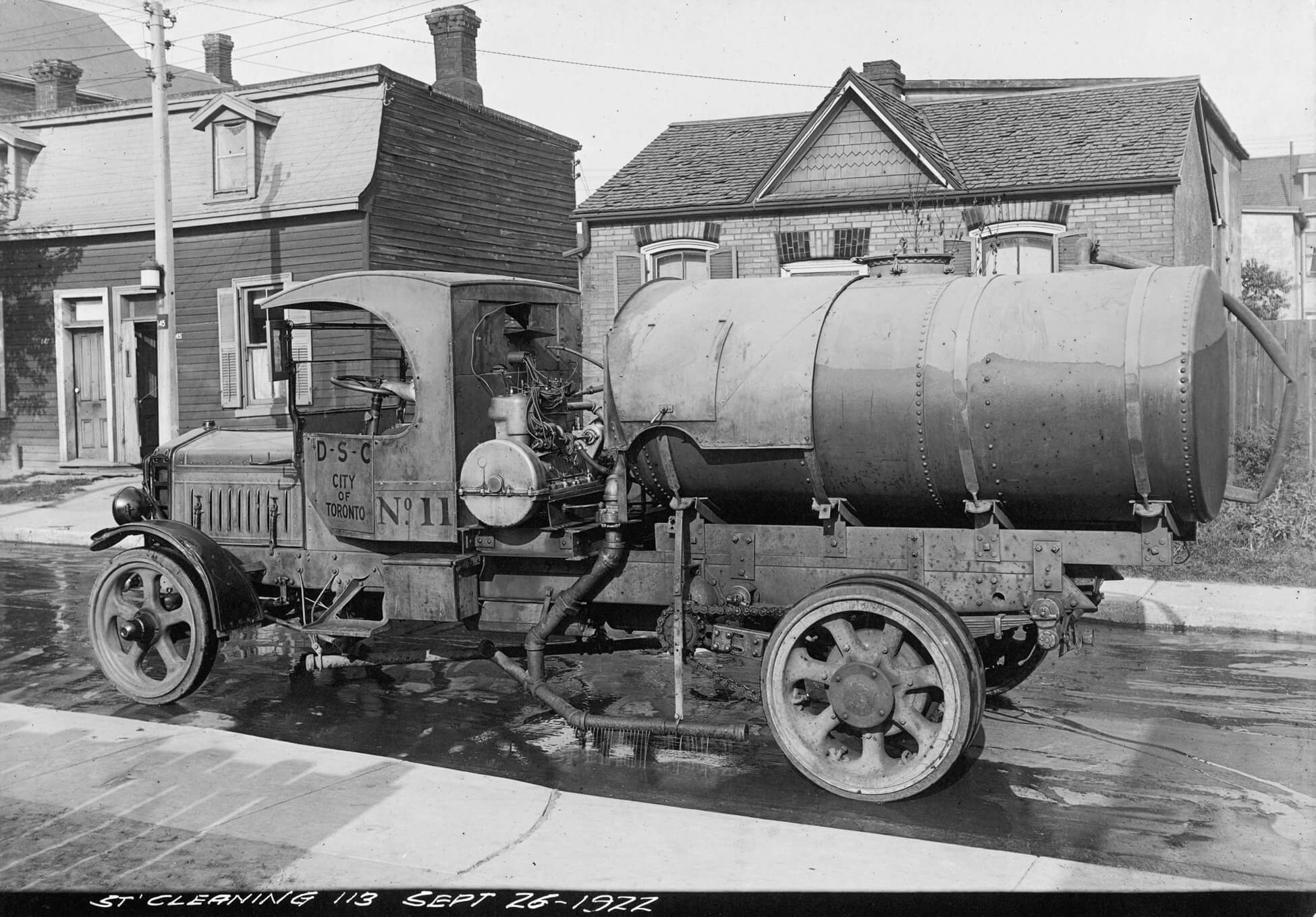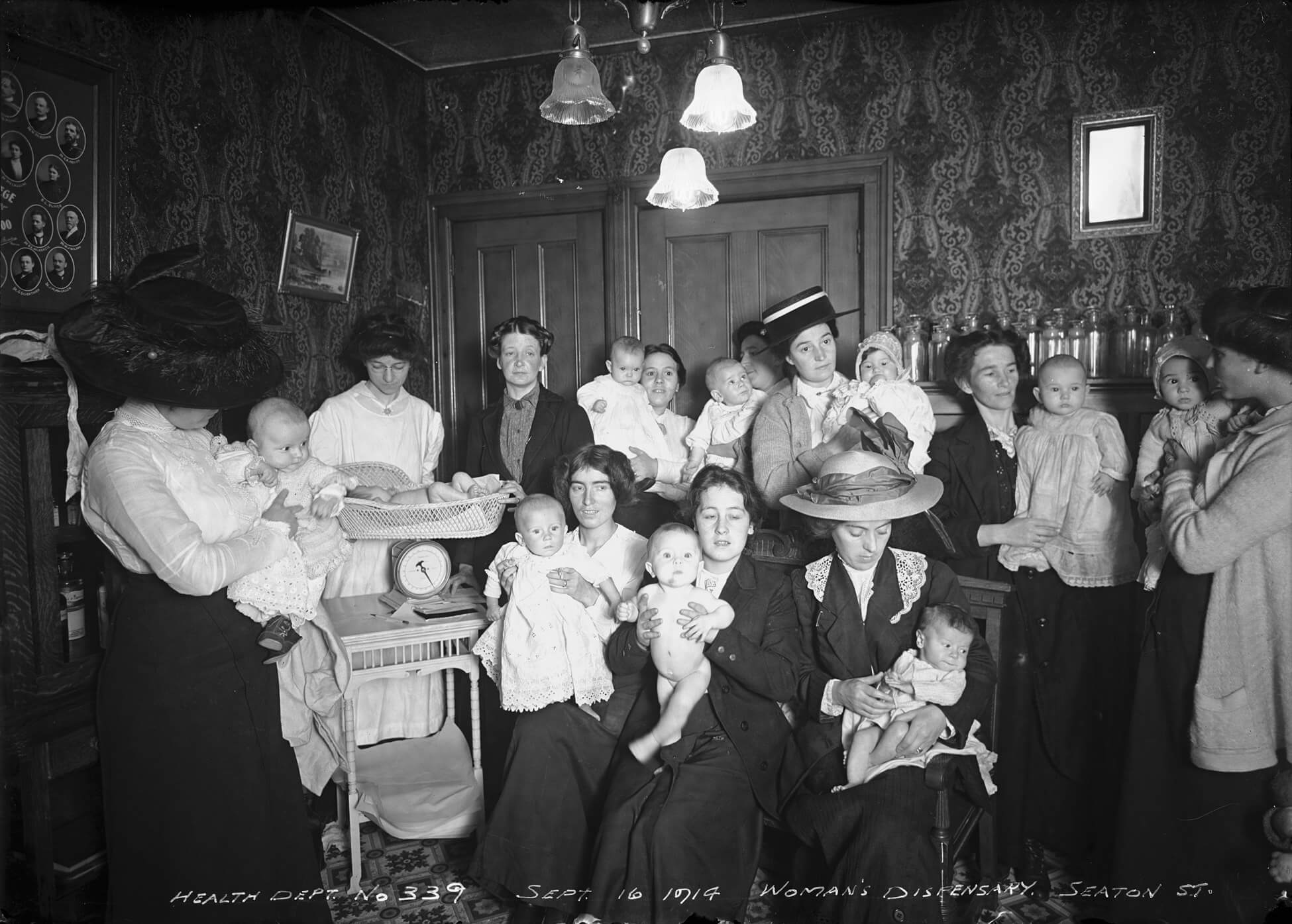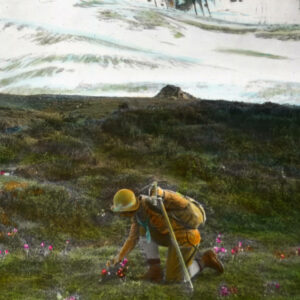William Arthur Scott Goss (1881, London, Ontario–1940, Toronto)

Bloor Street Viaduct, Deck Looking West, July 18, 1917
Gelatin silver print, 13 x 18 cm
City of Toronto Archives
Arthur Goss (1881–1940) is best known as the City of Toronto’s first official photographer. His depiction of the construction of the Bloor Street viaduct, a political and engineering achievement that connected the east side of the Don Valley to the downtown core, deftly captures the monumental concrete and steel bridge that would become a symbol of the city’s modernization. By producing photographs that were used as evidence, both of perceived problems and of the improvements that were meant to remedy them, he participated in the liberal reform of twentieth-century Toronto. Goss worked right up to his death in 1940 and made a critical contribution to the bureaucratic use of photography in Canada.
Goss and his family moved to Toronto from London, Ontario, in 1883. He worked in the city engineer’s office until 1911, when he was promoted to the newly created position of city photographer. In this capacity, Goss photographed many aspects of Toronto for a range of municipal departments. For the Works Department, he photographed infrastructure, including road upgrades and the elimination of level crossings for railways, along with the new motorized trucks used for road maintenance, such as in the Gasoline Motor Flusher, 1922. For the Health Department, he assisted Medical Health Officer Dr. Charles Hastings with his investigation of overcrowding and unsanitary conditions, and images such as Rear, 81 Elizabeth Street, 1913, helped Dr. Hastings elicit support from the public and local politicians to demand government intervention. He also photographed health and education initiatives, such as visiting nurses and well-baby clinics, as seen in Woman’s Dispensary, 18 Seaton Street—Baby Clinic, 1914.


Goss’s photographs were frequently used in government reports, and some were published in the press. Others were used internally to identify problems and to track progress, or to report on new methods for carrying out a department’s work. A skilled and prolific photographer, Goss helped to make photography an essential resource in government operations.
He also contributed to artistic photography through his participation in Canada’s Pictorialist movement. He began exhibiting his artistic photographs in 1902 and won several awards. He was an admirer of Alfred Stieglitz (1864–1946), the well-known founder of the New York–based Photo-Secession and a key figure in American modernism. Goss explored typical Pictorialist subject matter such as portraits, genre scenes, and landscapes, and he experimented with the movement’s characteristic soft-focus style in works such as Child and Nurse, 1906.
Goss also tried to build a network of art photographers across the country by organizing exhibitions of pictorial photography in Toronto in 1919–20, and he contributed to the local arts community through his memberships in the Toronto Camera Club and in the Arts and Letters Club. He hoped that Canadian photographers would follow the example set by the Group of Seven painters and define a uniquely Canadian style in photography. His level of ambition, both for Pictorialism in Canada and for his own diverse exploration of photography, sets Goss apart from many of his contemporaries.

 About the Authors
About the Authors
 More Online Art Books
More Online Art Books
 Acknowledgements
Acknowledgements